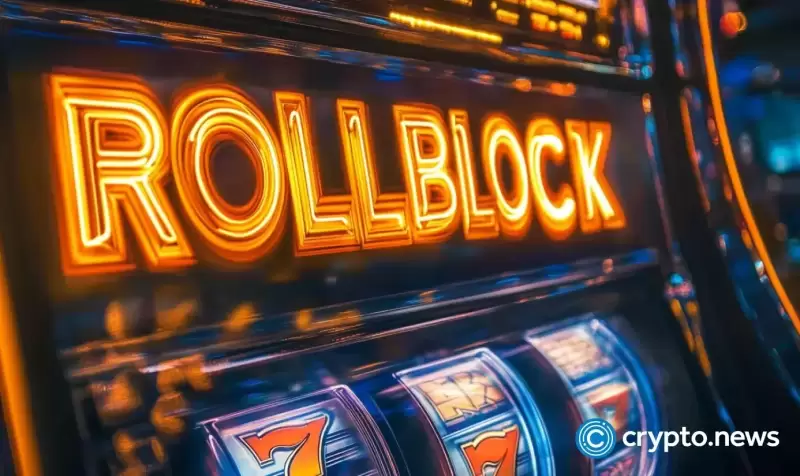 |
|
 |
|
 |
|
 |
|
 |
|
 |
|
 |
|
 |
|
 |
|
 |
|
 |
|
 |
|
 |
|
 |
|
 |
|
Cryptocurrency News Articles
From illusion to reality: parallels of tech bubbles
Apr 02, 2025 at 02:05 am
Whenever I watch investors pour billions into yet another technological revolution, I am reminded of Mark Twain's wisdom, "history doesn't repeat itself"

Whenever I watch investors pour billions into yet another technological revolution, I am reminded of Mark Twain's wisdom, “history doesn't repeat itself, but it often rhymes.” His words best describe the parallels between the dot-com era and the current fever over artificial intelligence.
From illusion to reality: parallels of tech bubbles
Do you remember the dot-com boom of the late ‘90s? That was an era of boundless optimism, when every company with the prefix .com in its name seemed like a gold mine.
Behind the scenes, however, a less visible but no less dramatic story was unfolding: the story of fiber optic technology, which promised to build the “information superhighway” of the future, where data would travel at the speed of light.
In the shadow of big names like Boo.com, another bubble was quietly inflating: fiber-optic firms that took off like rockets on promises of endless growth. Their stories are similar to today's narratives about the artificial intelligence revolution.
Ciena and other companies sold the future based on Forbes' prediction that "communications bandwidth will triple every year for 25 years." Telecoms invested over $500 billion in fiber optic infrastructure that was 85-95% unused after the collapse of the bubble.
Today, we see an almost identical picture in artificial intelligence.
The investment fever of our days
Four tech giants - Amazon, Google, Meta and Microsoft - announced $320 billion in capital spending this year alone. That's 40% more than last year, and roughly equivalent to two-thirds of all fiber investments in the entire '90s, but spent in just one year.
Mark Zuckerberg isn't shy about scale - he announced the construction of a Manhattan-sized data center for artificial intelligence. The $500 billion Stargate project and the UAE's initiative to invest $1.4 trillion in U.S. artificial intelligence infrastructure suggest that we are in the midst of an unprecedented investment boom.
Nvidia as a symbol of an era
The main beneficiary of this boom has been Nvidia. Since the introduction of ChatGPT, its market capitalization has grown from $400 billion to $2.8 trillion - a sevenfold increase! And it's not just speculative growth - the company's sales have soared from $27 billion in 2022 to $130 billion in 2024.
Nvidia CEO Jensen Huang believes that we've entered an era of "agent-based artificial intelligence" that requires 100 times more computing resources than anticipated a year ago. This he attributes to the need for massive investments in chips and data centers.
But even CEOs of tech giants recognize an element of FOMO (fear of lost profits) in their investment decisions. Google CEO Sundar Pichai recently stated, "At this stage of exponential growth, the risk of underinvestment is dramatically greater than the risk of overinvestment."
An alarm from the Middle Kingdom
On January 20, a little-known Chinese company DeepSeek released an artificial intelligence model R1, which is able to reason at a level comparable to OpenAI models. But the main surprise was that its training cost many times cheaper than its competitors, while using old-generation chips.
That news started a chain reaction on Wall Street dubbed "Artificial Intelligence Black Monday," the largest single-day selloff of Nvidia stock in U.S. history at $600 billion.
DeepSeek has demonstrated that the future of artificial intelligence may not be in brute computing power, but in algorithmic efficiency - models learn to think and know where to serve food, rather than memorizing everything. This can radically reduce the cost of training and running models.
An equation with unknown profits
Another troubling signal is that the artificial intelligence economy is not yet working. By some estimates, America's largest software companies have earned only $10-20 billion from artificial intelligence products this year. That's a drop in the ocean compared to nearly half a trillion dollars in investment.
Even OpenAI, in the words of Sam Altman, isn't breaking even, despite a subscription fee of $200 a month for a premium plan.
A story waiting to rhyme
According to a sobering report by the Organisation for Economic Co-operation and Development, artificial intelligence will add just 1% to GDP growth over the next decade. While the technology could theoretically replace up to 20% of jobs, that figure shrinks to a modest 5% when real-world implementation costs are taken into account.
We are witnessing a classic situation where the ambitions of technology giants and investors are far ahead of the actual implementation of the technology. As the head of Nvidia noted, the industry was wrong in its forecasts: "The demand for computing power and scaling of artificial intelligence is not only not decreasing, but is actually growing at an incredible acceleration.
And there's a serious threat to the
Disclaimer:info@kdj.com
The information provided is not trading advice. kdj.com does not assume any responsibility for any investments made based on the information provided in this article. Cryptocurrencies are highly volatile and it is highly recommended that you invest with caution after thorough research!
If you believe that the content used on this website infringes your copyright, please contact us immediately (info@kdj.com) and we will delete it promptly.
-

-

- Elon Musk Resigns from Trump Administration, Sending Shockwaves Through Crypto and Political Spheres
- Apr 03, 2025 at 09:45 am
- In an unexpected and unprecedented development, tech magnate and billionaire entrepreneur Elon Musk has reportedly stepped down from his position in the Trump administration. This decision has sparked widespread reactions across financial markets, cryptocurrency platforms, and political circles worldwide.
-

-

-

-

- NEO Foundation Denies Insider Trading and Price Manipulation After 35% Price Drop
- Apr 03, 2025 at 09:35 am
- Over the past week, NEO's [NEO] price movement has left the whole crypto community talking. As such, some investors have accused the NEO Foundation of potential insider trading and price manipulation.
-

-

-





























































